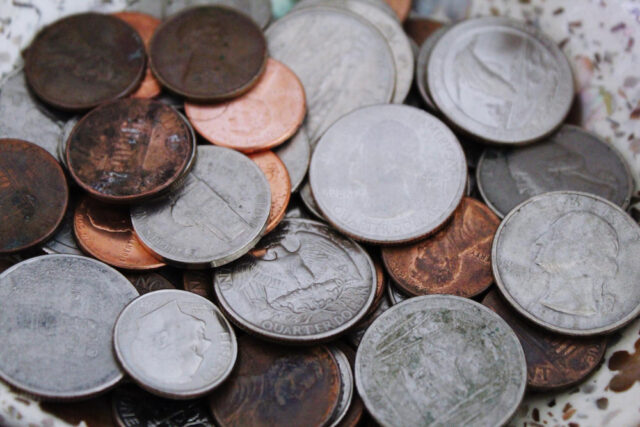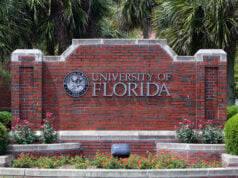
Most Floridians have no idea they’re sitting on small fortunes. That jar of old coins gathering dust in your closet? It could contain pieces worth hundreds or even thousands of dollars. The Sunshine State’s rich history and diverse population mean countless rare coins are hiding in homes across the region.
Let’s break it down. Florida’s unique position as a tourism hub and retirement destination has created a melting pot of currency from different eras and countries. People move here from all over the world, bringing family heirlooms and forgotten collections. Many of these coins have appreciated dramatically over the years.
Professional coin buyers see this pattern daily. Collectors and dealers at Tampa Coin Buyers regularly encounter surprised sellers who discover their “junk drawer” coins are worth far more than face value. Understanding what makes certain coins special can help you identify which pieces deserve a closer look.
The Most Common Valuable Coins Found in Florida
Pre-1965 silver coins top the list of hidden wealth. Any dime, quarter, or half dollar minted before 1965 contains 90% silver. At current silver prices, these coins trade for several times their face value based on metal content alone. You can identify them by checking the edge. Silver coins show no copper stripe, while modern coins display a visible copper layer.
Wheat pennies from 1909 to 1958 also attract collector interest. Most are worth just a few cents, but certain dates and mint marks command premium prices. The 1909-S VDB penny, 1914-D, and 1955 doubled-die penny can fetch thousands in good condition. Check the back of your old pennies for wheat stalks instead of the Lincoln Memorial.
Buffalo nickels minted between 1913 and 1938 represent another common find. While circulated examples typically sell for less than a dollar, rare dates and well-preserved specimens can exceed $100. The 1937-D three-legged buffalo variety, caused by a die error, can bring over $1,000.
Silver Dollars Tell Florida’s Story
Morgan and Peace silver dollars are popular discoveries in Florida estates. These large, beautiful coins contain nearly an ounce of silver and often carry numismatic premiums beyond their metal content. Morgan dollars were minted from 1878 to 1904, then again in 1921. Peace dollars followed from 1921 to 1935.
Certain dates and mint marks make these coins particularly desirable. The 1893-S Morgan dollar, with only 100,000 minted, regularly sells for over $5,000 in circulated condition. The 1928 Peace dollar, struck in limited quantities, commands similar premiums.
Floridians who traveled or served overseas often brought back foreign silver dollars. Mexican pesos, Canadian dollars, and other international silver coins also hold melt value and collector interest. Don’t overlook these pieces when sorting through old coins.
Gold Coins Hide in Plain Sight
Gold coins represent the biggest surprise for many Florida residents. Even small gold pieces hold considerable value. Indian Head pennies contain no gold, but $2.50, $5, $10, and $20 gold pieces circulated widely until 1933 when the government recalled most gold coins.
A single $20 gold piece (called a “Double Eagle”) contains nearly one ounce of gold. At current prices, the melt value alone exceeds $2,000. Rare dates and well-preserved examples can sell for much more. The 1927-D Saint-Gaudens double eagle, one of the most beautiful American coins, trades for thousands even in lower grades.
Smaller gold coins also deserve attention. $5 gold pieces (half eagles) and $2.50 gold pieces (quarter eagles) appear in old jewelry boxes and safe deposit boxes throughout Florida. Many people inherited these coins and tucked them away without realizing their worth.
State Quarters and Modern Finds
Don’t ignore recent coins. The 50 State Quarters program launched in 1999 and created new collecting interest. While most state quarters trade at face value, certain error coins and silver proof versions hold premiums. The 2004 Wisconsin quarter with an extra leaf detail can sell for several hundred dollars.
Modern presidential dollars and other commemorative coins sometimes contain valuable errors. Doubling, missing edge lettering, and off-center strikes turn ordinary pocket change into collectible pieces. Online resources help you identify these varieties.
Kennedy half dollars from 1964 contain silver and trade well above face value. The 1970-D half dollar, not released for circulation, can bring $100 or more if found in change. Checking your Kennedy halves takes just seconds and might pay off.
Determining Your Coins’ True Worth
Condition matters enormously in coin valuation. The same coin can vary from a few dollars to thousands based solely on its state of preservation. Professional grading services like PCGS and NGC authenticate and grade coins on a 70-point scale. Coins grading MS-65 or higher command strong premiums.
Several factors affect coin values beyond condition. Rarity plays a major role. The fewer examples that survive, the higher the demand among collectors. Mint marks (small letters indicating where a coin was made) can dramatically change worth. A common Philadelphia coin might be worth a dollar while the same date from San Francisco brings hundreds.
Historical significance also drives prices. Coins from famous shipwrecks, those with interesting error stories, or pieces from transitional years between designs attract collector attention. The 1916-D Mercury dime, the first year of that design from the Denver mint, is worth far more than other Mercury dimes.
Where to Get Your Coins Evaluated
Finding a reputable buyer starts with research. The American Numismatic Association offers a dealer directory of ethical coin professionals. Local coin clubs exist throughout Florida and provide educational resources plus networking with experienced collectors.
Avoid rushing to sell without getting multiple opinions. A single appraisal might not reflect true market value. Different buyers specialize in different areas. One might focus on gold while another prefers rare pennies. Getting several evaluations helps ensure fair pricing.
Watch for red flags when selecting an evaluator. Legitimate buyers explain their offers clearly and provide references. They don’t pressure you to sell immediately or claim your coins are worthless then make a quick offer. Take time to understand what you have before committing to any sale.
Protecting and Storing Your Discoveries
Once you identify potentially rare coins, proper storage becomes important. Never clean old coins. Cleaning removes natural toning that collectors prize and can destroy value. Even dirty-looking coins often grade higher than cleaned examples.
Store coins individually in protective holders. Cardboard flips with plastic windows or hard plastic cases prevent damage from handling and environmental factors. Keep coins away from moisture and extreme temperatures. Many Florida residents use bank safe deposit boxes for their most prized pieces.
Document your collection with photos and written descriptions. This record helps with insurance claims if theft or disaster strikes. It also provides your heirs with information about what you own and its approximate worth.
The Bottom Line
Florida’s homes contain more numismatic wealth than most people imagine. Those old coins represent both monetary value and pieces of history. Taking time to examine what you have can lead to pleasant surprises. Whether you choose to sell, collect, or pass coins to the next generation, knowing their worth helps you make informed decisions. Start sorting through those old jars and drawers today. You might discover your own Florida treasure.
Disclaimer
The information contained in South Florida Reporter is for general information purposes only.
The South Florida Reporter assumes no responsibility for errors or omissions in the contents of the Service.
In no event shall the South Florida Reporter be liable for any special, direct, indirect, consequential, or incidental damages or any damages whatsoever, whether in an action of contract, negligence or other tort, arising out of or in connection with the use of the Service or the contents of the Service. The Company reserves the right to make additions, deletions, or modifications to the contents of the Service at any time without prior notice.
The Company does not warrant that the Service is free of viruses or other harmful components












